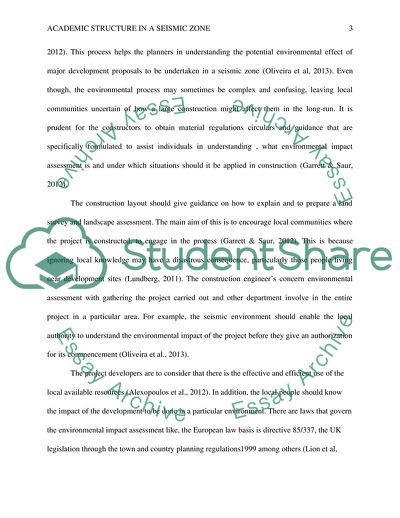Cite this document
(Environment Management and Sustainable Development When Constructing Coursework Example | Topics and Well Written Essays - 2750 words, n.d.)
Environment Management and Sustainable Development When Constructing Coursework Example | Topics and Well Written Essays - 2750 words. https://studentshare.org/engineering-and-construction/1826925-environment-managementsustainable-development-when-constructing-in-a-seismic-zoneturkey-ankarauniversity-of-ankara
Environment Management and Sustainable Development When Constructing Coursework Example | Topics and Well Written Essays - 2750 words. https://studentshare.org/engineering-and-construction/1826925-environment-managementsustainable-development-when-constructing-in-a-seismic-zoneturkey-ankarauniversity-of-ankara
(Environment Management and Sustainable Development When Constructing Coursework Example | Topics and Well Written Essays - 2750 Words)
Environment Management and Sustainable Development When Constructing Coursework Example | Topics and Well Written Essays - 2750 Words. https://studentshare.org/engineering-and-construction/1826925-environment-managementsustainable-development-when-constructing-in-a-seismic-zoneturkey-ankarauniversity-of-ankara.
Environment Management and Sustainable Development When Constructing Coursework Example | Topics and Well Written Essays - 2750 Words. https://studentshare.org/engineering-and-construction/1826925-environment-managementsustainable-development-when-constructing-in-a-seismic-zoneturkey-ankarauniversity-of-ankara.
“Environment Management and Sustainable Development When Constructing Coursework Example | Topics and Well Written Essays - 2750 Words”. https://studentshare.org/engineering-and-construction/1826925-environment-managementsustainable-development-when-constructing-in-a-seismic-zoneturkey-ankarauniversity-of-ankara.


